Patreon ~ MUSICARTA ~ Premium
The Musicarta Beat and Rhythm Workbook
Snake Dance Series
A Basic Performance
The melody
First, watch the performance video, below. We're going to be learning just the melody (right hand) first.
Playing the melody by the fingering
Here's the Snake Dance melody. You don't have to read the music or play it just yet - just glance at it.
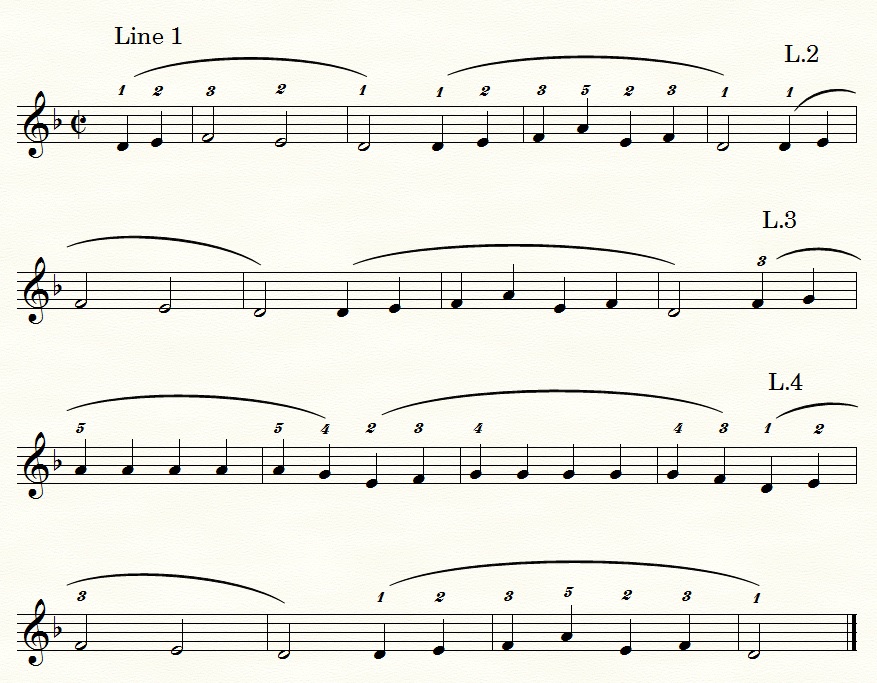
You notice that Lines 1, 2 and 4 of the tune are the same and Line 3 is different.
(The 'lines' of music start a bit before the lines of manuscript or MS - written-out music.)
|
To play the Snake Dance melody, you put your hand in a ‘D minor
position’ – covering keys D to A in the middle of the keyboard. Five
fingers, five keys – one key each. You only use white keys – that’s what makes it a D minor position. (You need F sharp for a major sound.) |
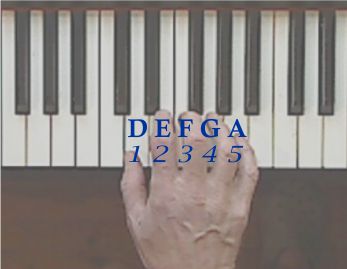 |
To play the Snake Dance tune, you play fingers:
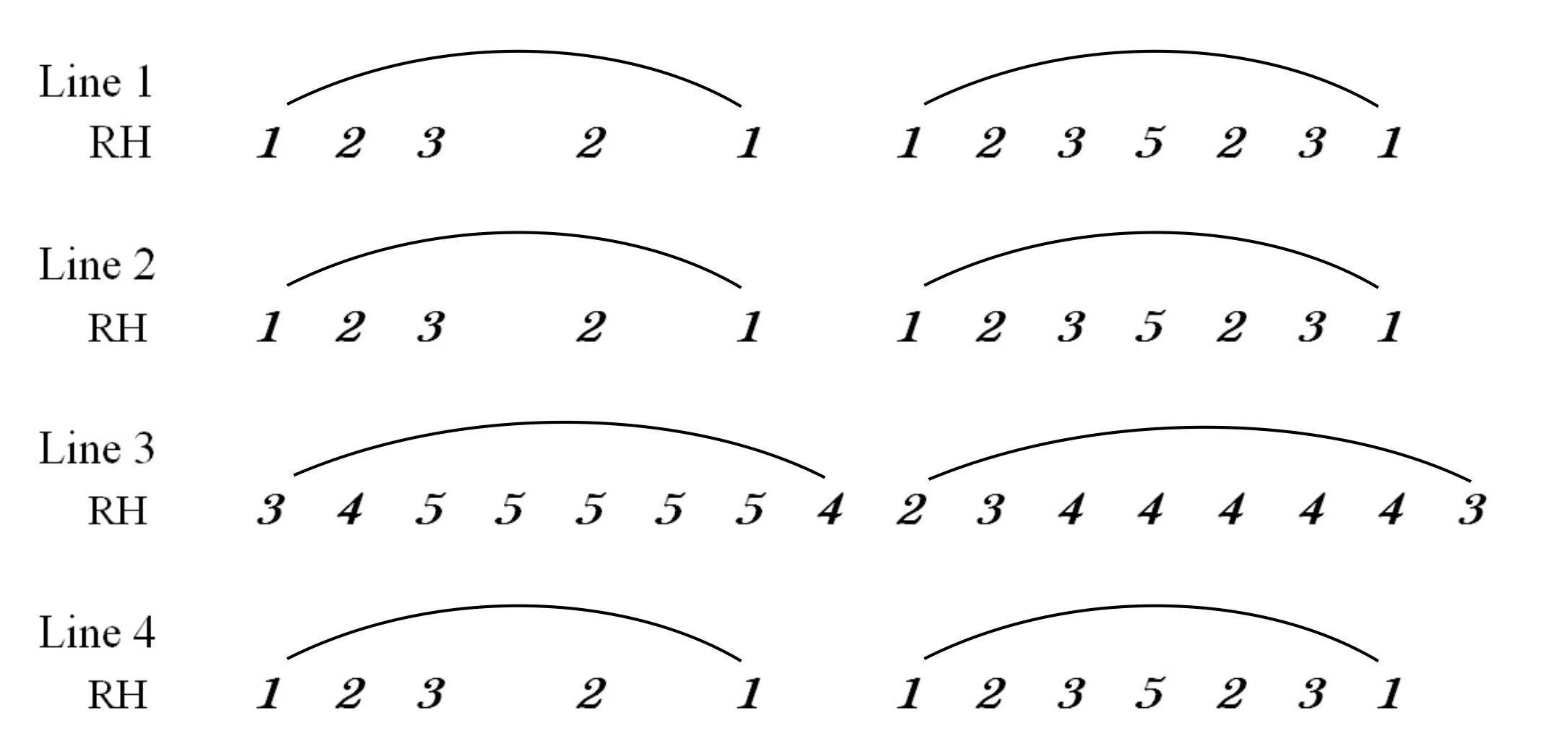
Say-and-play, or, better still, sing-and-play along, several times.
It’s quite legitimate to learn the tune just from the finger numbering if you don’t read music. In this case, you’re saying out loud the scale degrees (notes of the scale) and improving your aural skills.
Fingering difficulties
Use this fingering difficulties video in tandem with the teaching noes below.
The hardest part of the first line-type is the 5-2-3-1 section at the end – so practice that bit over and over.

Then put it in the phrase: 1-2-3-5-2-3-1.

Practice repeating any section of that fingering until “it’s all the same to you…”!
Copy the examples from the teaching video. Work out what’s difficult for you and make up little exercises for yourself.
Line 3
Line 3 has the same pattern twice, first from finger 3, then from finger 2.
Memorise the pattern. There are five of the top notes. Count them off as you play them – learners often stop at four.
There are two places in Line 3 (and going on) where you skip notes and change direction. They are 5-4-2-3 and 4-3-1-2. Practice them separately then stitch them together, as in the teaching video.

Your first performance
Check that you can play along (right hand only - left hand is up next!) to the first
video.
Go back and fix up any places you're unsure of. You want to know the melody by heart and believe your fingers will play it correctly next time!
Adding the left hand
The two-handed position
To add the left hand, we find what
Musicarta calls a ‘basic music-making position’. Follow the method in this teaching video.
|
Both hands cover five white keys – one key per finger. There are two unused white keys between the thumbs. The lowest key in each hand is the ‘name note’ of the position – here, the D in ‘D minor position’. All the left hand does is play two notes together (that we call ‘a fifth’) four times per line. You can see just by looking at the tiny sample music (right) the two important-looking notes underneath the melody. You can easily see how the MS represents the sound of the module performance, even if you don't 'read music'. |
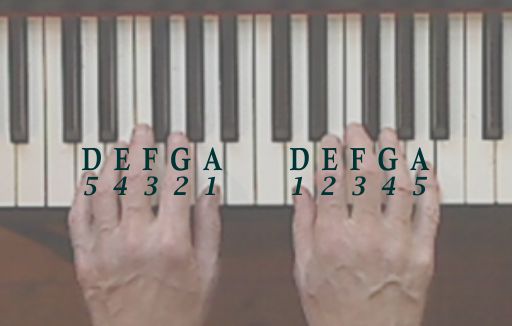 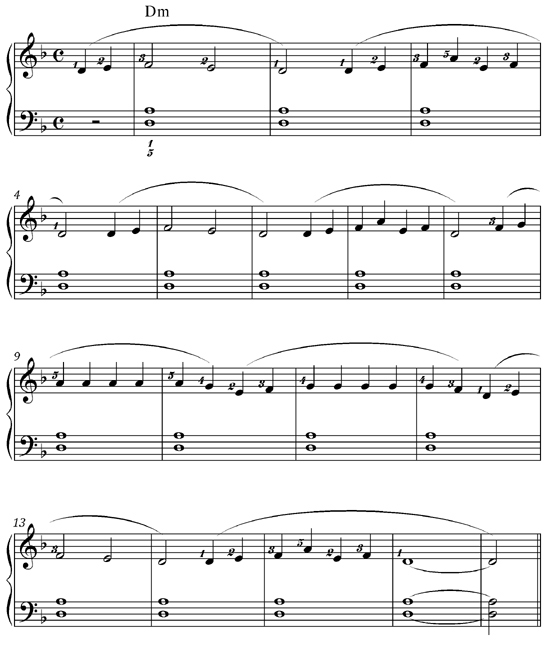 |
Tapping the rhythm
To coordinate your hands better, follow the teaching video below and rehearse the together-left-right (TLR) pattern of the whole performance.
'TLR (together-left-right) analysis' - figuring out 'what comes with what' - and rehearsing by tapping are useful ways of tackling difficult rhythms.
Playing by numbers
Providing you’ve got the hand position right, you can play the Snake Dance by (fingering) numbers alone.
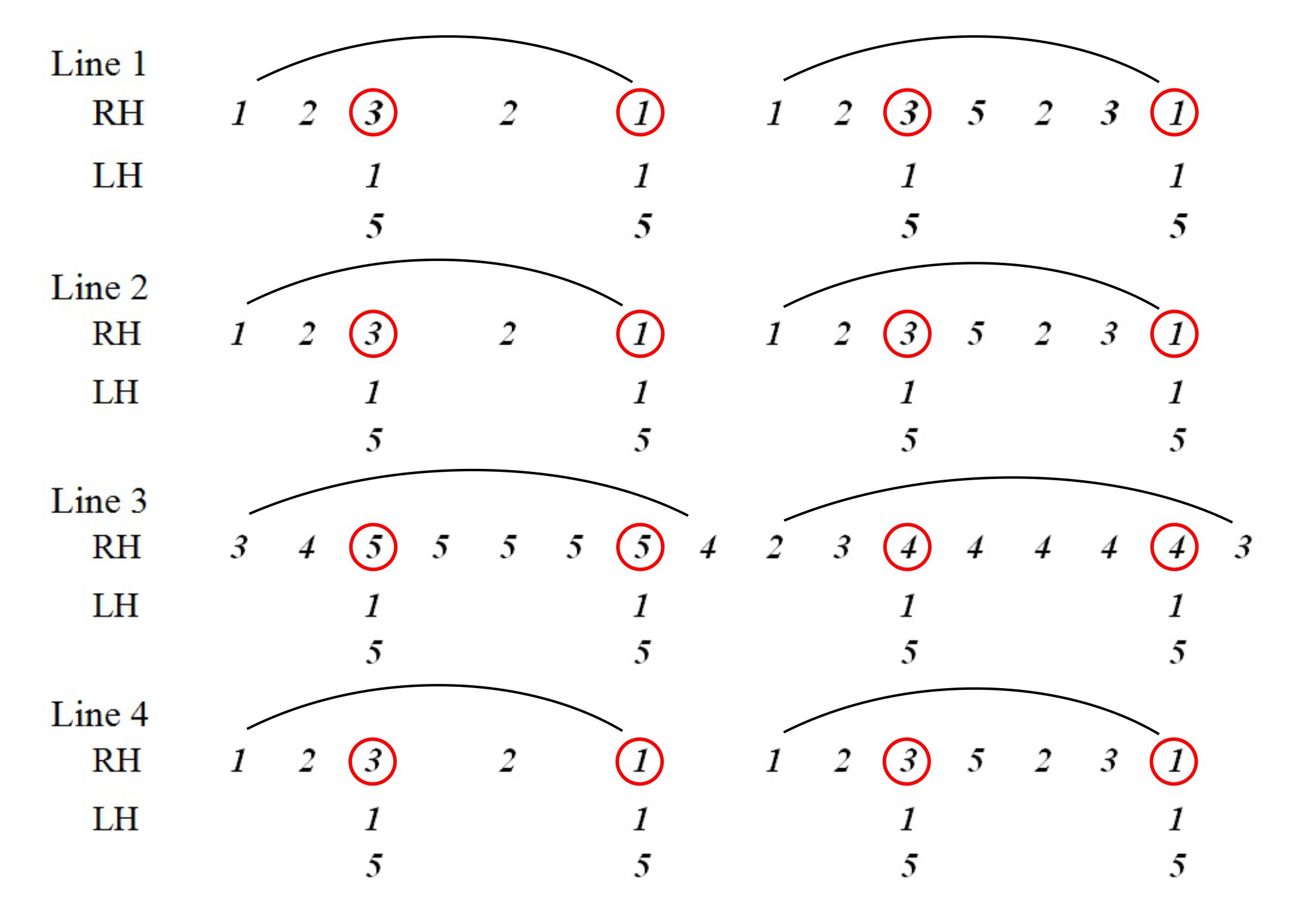
Hopefully, you can hear the version even as you just look at this fingering ‘script’.
This is the ‘theme’ we build all all the subsequent
variations on, so be sure you can play it well before going on. Here's the module reference performance one last time.
When your performance is reliable, go on to the next lesson.
|
OUT NOW! |
THE MUSICARTA BEAT & RHYTHM WORKBOOK At last! An effective approach to keyboard rhythm & syncopation skills. Learn more! |
ONLY $24.95! |
Patreon Beat & Rhythm Workbook
|
The MusicartaA methodical approach to keyboard syncopation for
|
PUBLICATIONS
exciting keyboard
creativity courses
CHORDS 101
WORKBOOK

~HANON~
video course

Musicarta
Patreon
PENTATONICS
WORKBOOK
video course

Creative Keyboard
video course

BEAT AND RHYTHM
WORKBOOK

- Volume 1 -

12-BAR PIANO
STYLES WORKBOOK

MUSICARTA MODES
WORKBOOK

PIANO STYLE

CANON PROJECT
video course

VARIATIONS
video course


- Piano Solo -
video course

- Piano Solo -


YouTube playlists





 THE LOGO
THE LOGO
